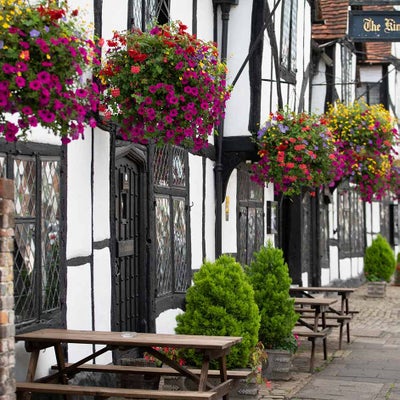
Quick facts
Edible plants such as herbs, salad leaves, tumbling tomatoes and strawberries can all be grown in hanging baskets
Small shrubs and perennials with colourful foliage provide interest year round
Choosing plants adapted to dry conditions will reduce the amount you need to water
Use them to brighten up walls and add kerbside appeal
Getting started
Traditional summer hanging baskets are a great way to add colour to walls and buildings. Winter bedding, or less traditional plantings of herbs, salad, fruit or , can also look good and help you make the most of vertical space in your garden.
What you’ll need to plant a hanging basket:
- Hanging basket (wire, woven wicker, or wood)
- Basket liner (coir, jute, a thick layer of moss from your garden or sustainably sourced sphagnum moss)
- Plants
- Hand trowel
- A short pot for balancing the basket on while planting
- Peat-free multi-purpose compost
- Newspaper and scissors
Top Tip
Plant up baskets with summer bedding towards the end of May or early June, ready for hanging up outside when all risk of frost has passed.
How to plant a hanging basket in six simple steps
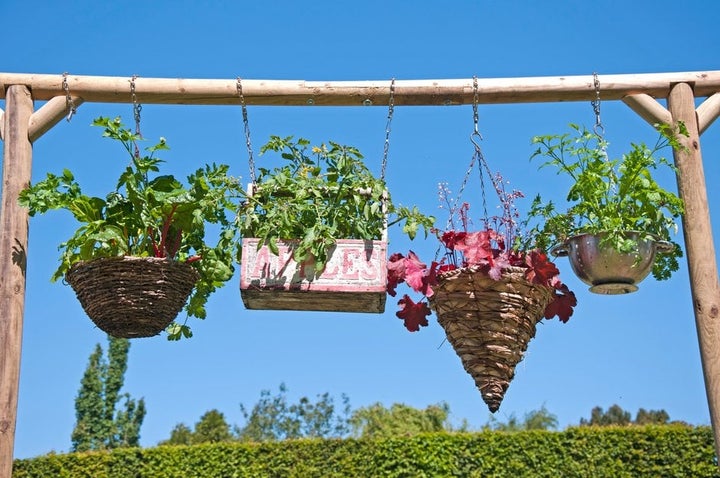
- Choose your plants Decide if you want seasonal (summer or winter bedding plants) or hardy plants for a longer lasting display. A ‘thriller, filler and spiller’ mix of plants – some with showy flowers or foliage, some taller or bushy plants to fill out the basket and some trailing plants to soften the edges – gives an attractive display.
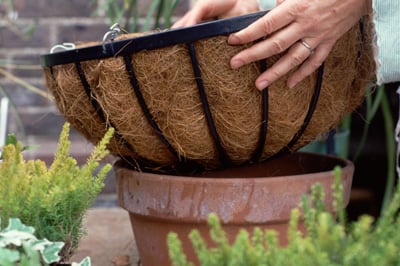
- Prepare for planting Stand your basket on a wide, short pot to keep it stable. If the basket isn't already lined, lay moss or a proprietary liner inside the frame.
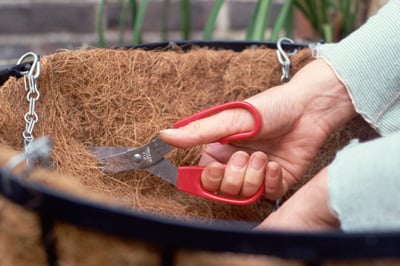
- Create planting holes in the sides of your basket Cut holes into the liner at varying heights, at least 10cm up from the base. The spaces between the frame of your basket will determine the size of plants you can use. Planting through the sides is not essential, but it helps the basket look fuller more quickly.
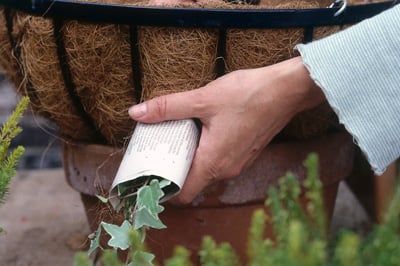
- Plant up the sides of the basket Add peat-free to the level of the cut holes, then wrap newspaper around the root balls of your plants and push them through the holes into the basket. Add extra compost to cover the roots and gently firm it down.
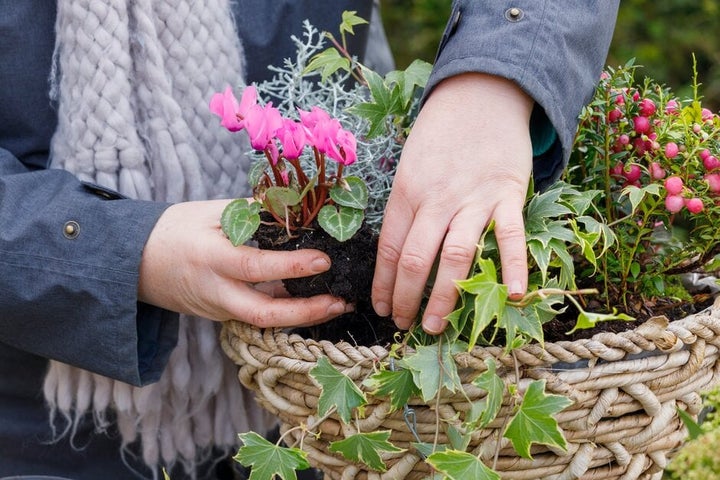
- Plant the top of the basket Add more compost and plant short or trailing plants around the edge and taller plants in the centre. Fill in around them with compost so the final compost level is just slightly below the rim of the basket.
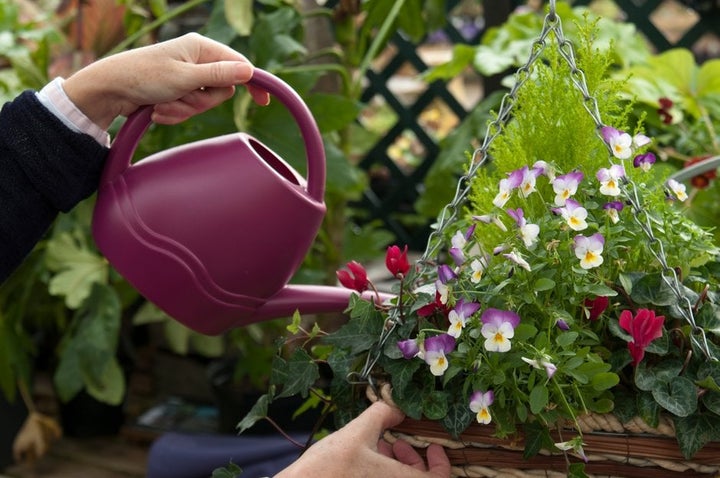
- Water your basketWater slowly but thoroughly before hanging it up, using a watering can with a fine rose to prevent the soil being disturbed. Check the compost regularly - hanging baskets may need watering daily during hot summer weather. If the basket is too heavy to lift up and down easily, water using a hose on a fine spray setting.
Aftercare
Depending on the type of plants you choose, your basket may benefit from occasional feeding to boost flowering and encourage healthy growth. Summer annuals that you expect a lot of flowers from will benefit from a couple of high potassium liquid feeds during the season. Plants chosen to stay in the basket for more than a year will benefit from a sprinkling of general purpose granular fertiliser in spring.
Regular deadheading (snipping off old flower heads) helps prolong flowering of many summer and winter bedding plants.








